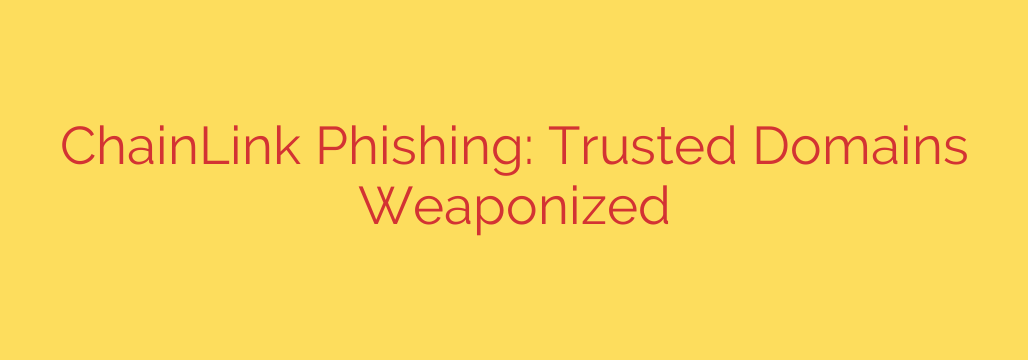
A concerning new trend in phishing attacks targeting cryptocurrency users, particularly those associated with Chainlink, has emerged. Instead of relying on obviously suspicious website names, malicious actors are now weaponizing seemingly legitimate and trusted domains to host elements of their phishing infrastructure.
This sophisticated tactic involves sending potential victims emails or messages that contain links pointing to websites with established, non-crypto reputations. These initial links, hosted on domains you might typically trust for other purposes, then silently redirect users through several steps to a highly deceptive phishing page. The final destination site is designed to mimic legitimate cryptocurrency platforms or wallet interfaces, specifically targeting users’ private keys, seed phrases, or wallet login credentials.
The use of trusted domains in the initial stages makes these scams much harder to detect using traditional security filters that rely on domain reputation. Users are more likely to click a link from a familiar domain, unaware that it’s merely a stepping stone to a malicious endpoint. Once on the fake site, the attackers employ convincing visuals and urgent calls to action to trick users into divulging sensitive information that gives the scammers access to their digital assets.
Security researchers have highlighted this technique, emphasizing the increasing sophistication of cybercriminals. This evolution means that simply checking if a domain looks familiar is no longer sufficient protection. Users must exercise extreme caution and verify URLs meticulously before interacting with any website, especially when it involves connecting a wallet or entering login details.
The key takeaway is that attackers are adapting. They are leveraging the trust users place in non-crypto online services to facilitate crypto theft. To protect yourself, always bookmark official websites and navigate directly rather than clicking links in emails or messages, even if they appear to come from a known source or point to a trusted domain initially. Be extra vigilant and never share your recovery phrase or private keys with anyone or enter them on a website you haven’t navigated to directly using a trusted bookmark. This new approach underscores the critical need for heightened security awareness in the digital asset space.
Source: https://www.bleepingcomputer.com/news/security/chainlink-phishing-how-trusted-domains-become-threat-vectors/








